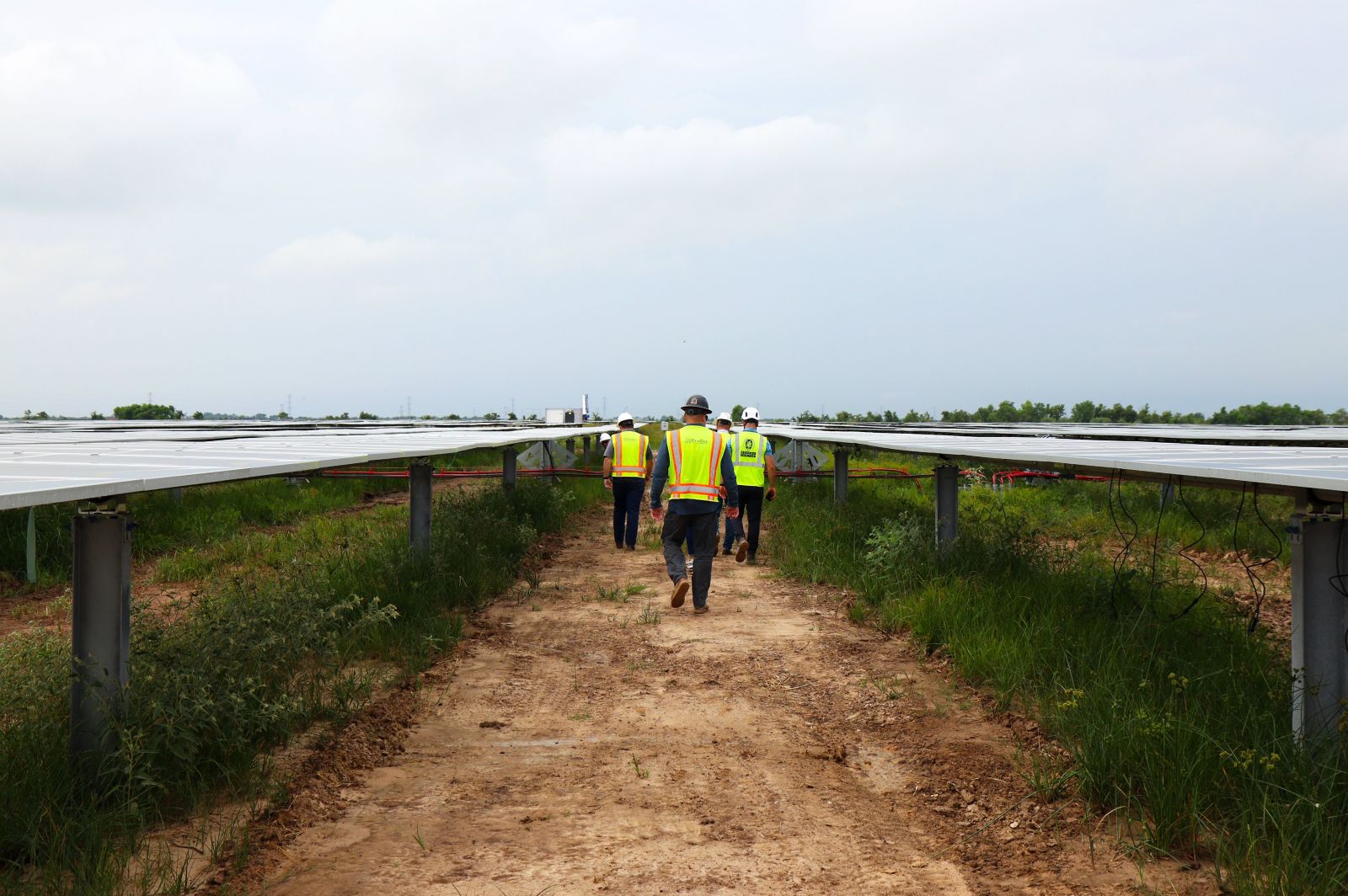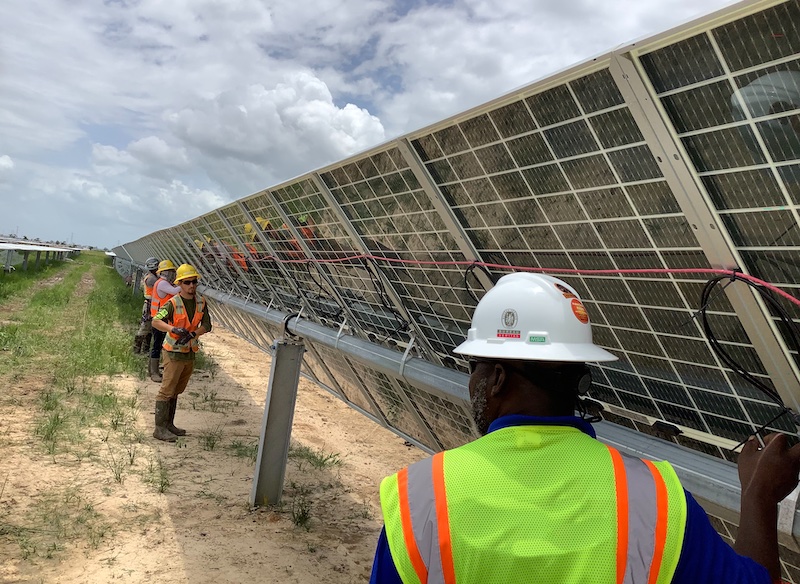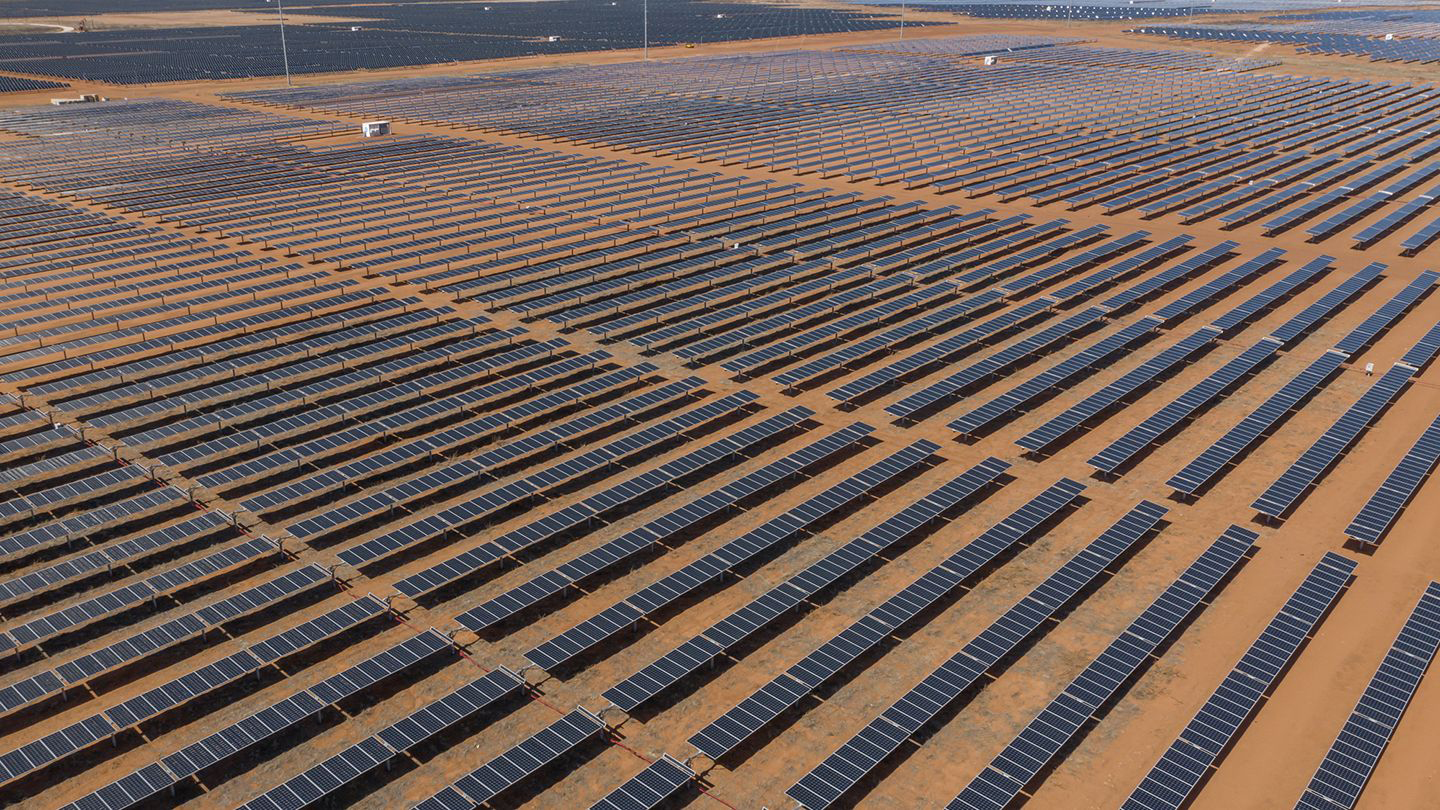Solar’s Supply Chain
The clean energy sector exhibits a sunny outlook, poised for acceleration. Renewables are set to account for almost 95 percent of the increase in global power capacity through 2026, with solar PV alone providing more than half. Global solar PV installations are projected to see over 20 percent growth in 2022, surpassing the 200 GWdc barrier for the first time. This is necessitating an exponential increase in manufacturing capacities for everything from panels and modules, to inverters and trackers.
But supply chain challenges continue to bubble up and threaten the future of the industry. Solar suppliers, manufacturers, developers, and utilities alike face great uncertainty surrounding the immediate future of the market, as the landscape continues to be riddled with volatility stemming from various factors. These include The Antidumping and Countervailing Duties (AD/CVD) Anti-Circumvention Petition, Section 201 Tariffs, the Department of Commerce Tariffs, ongoing supply chain issues stemming from COVID-19, and the Uyghur Forced Labor Prevention Act.

The crux here is that supply chain disruptions stemming from these factors are increasing shipping and equipment costs for solar components, driving a spike in pricing, which causes project delays and further constrains the market.
Until recently, declining PV system costs—which fell by more than 50 percent, on global average, from 2013 to 2020—have been a core reason for the explosive growth of the industry. In 2021, however, PV systems costs increased by 4 percent year-on-year due to shortages of components, raw materials, and labor, as well as rising shipping costs. Despite these new impediments, strong demand persists, resulting in installations in key markets and driving expansion. But, will this trajectory last?
The equation for sustainable growth
In 2021, the US installed more wind, solar, and battery storage than any year in history. But as Heather Zichal, CEO and president of American Clean Power, so eloquently said, “As important as 2021 was, 2022 will be the year that determines whether we accelerate progress or whether we plateau”.
How do we succeed? The future shows promise for new growth paths for the renewable energy industry, thanks to advanced technologies and business models encouraging supply chain resilience, and potentially supportive policies from an administration focused on combatting climate change.
Strategies and policies for supply chain resilience
A massive scale up is anticipated as demand for solar energy proliferates. The IEA predicts that almost two-thirds of electricity generation needs to be renewable by 2030, in order to set the world up to achieve the 2050 Paris Agreement target. There is a vast gap between what we have now, and what we need for the future. As it stands, the supply chain is not equipped to deliver to meet these goals.
Meeting the goals would require adding 12 percent more renewable generating capacity each year, over the next eight years – double the current rate. This will require much faster deployment of renewable technologies to achieve the Net Zero Emissions by 2050 Scenario. New business players and regions (including leaders from the Oil & Gas segment) must join the transitioning efforts in the march toward renewables. Eventually, we will need to see whole new supply chains - without previous track records in renewables – emerging to deliver the immense scale up required to achieve net-zero. Making this work in terms of quality, safety, and competitiveness will be the key challenge in this transition.
 Additionally, government policies that are currently lagging will need to become more proactive and supportive to harness new investment and expand capacity. Many solar players expressed concern regarding the recent Department of Commerce investigation, announced in March of this year. Tariffs in the solar industry are not new (they have been around since 2012), but what was concerning to the industry was the level of uncertainty now facing developers and the deregulated market. The recent decision by the Administration, which pauses tariffs on South East Asian panel imports for two years, was very welcome. It does two things. First, it creates a sense of regulatory certainty for the investor community, which will spur development and construction activities. Solar project cost escalations create significant delays, as they not only impact the CAPEX spend for developers, but also create issues with previously negotiated offtake Power Purchase Agreements (PPAs). Second, the Administration will be invoking the Defense Act to promote the build out of US supply chains. This will both enable cost parity with foreign manufactures, and reduce outside volatility.
Additionally, government policies that are currently lagging will need to become more proactive and supportive to harness new investment and expand capacity. Many solar players expressed concern regarding the recent Department of Commerce investigation, announced in March of this year. Tariffs in the solar industry are not new (they have been around since 2012), but what was concerning to the industry was the level of uncertainty now facing developers and the deregulated market. The recent decision by the Administration, which pauses tariffs on South East Asian panel imports for two years, was very welcome. It does two things. First, it creates a sense of regulatory certainty for the investor community, which will spur development and construction activities. Solar project cost escalations create significant delays, as they not only impact the CAPEX spend for developers, but also create issues with previously negotiated offtake Power Purchase Agreements (PPAs). Second, the Administration will be invoking the Defense Act to promote the build out of US supply chains. This will both enable cost parity with foreign manufactures, and reduce outside volatility.
All this must happen swiftly. The target goals are aggressive, and pose a significant supply chain risk. The foundational backbone is to build a resilient supply chain with tools that provide real-time insight into its health. Two dimensions are important when talking about resilience:
1) Supply chain resistance: The ability a supply chain has to sustain disruptions whilst maintaining business continuity
2) Supply chain responsiveness: The ability to recover quickly after being hit by an external shock.
If a supply chain management system is set up and implemented correctly, companies can react swiftly and adjust seamlessly to unexpected changes like those caused by COVID-19. Artificial intelligence, machine learning, and advanced analytics are key tools driving speed, accuracy, and efficiency in how supply chains are managed.
A digital platform and supply chain risk management solution can offer instant insight via real-time data. By providing total visibility on the known—and unknown—risks threatening processes today, this digital tool helps businesses prepare for potential roadblocks and mitigate risk, reducing shocks.
Regardless of the cause, when an incident occurs, you need to know quickly, assess the potential risk, and take action to protect your business. Using field data collected from independent on-site verification of critical suppliers and partners can help to customize risk assessment of your supply chain. These risks include business continuity, HSE vulnerability, logistics and inventory, security, technical capability, as well as governance and social engagement. On top of this, ESG has become a major focus for supply chain management; business ethics, responsible sourcing, and climate change are top priorities for the industry.
The solar supply chain is very complex. Smart businesses must assess risks by supplier, project, geography, product category, and tier. This helps minimize shocks to demand, pricing, and logistics. It also drives supply chain value through a focus on risk management and process control. Ultimately, companies are able to build better supplier ecosystems that are based on transparency and trust.

These capabilities are critical – not only to manage the volatilities stemming from today’s crises, but also to prepare for a sustainable future. Mere band-aid solutions are no longer enough to navigate the landscapes. Leading companies that emerge from crisis environments will be those with advanced supply chain management practices in place, both to mitigate a wide range of risks, and to perform under various market conditions.
A saturated industry is a less resilient industry. Global supply chain diversification can reduce disruptions to ensure that a company is not fully reliant on potentially undependable sources, enabling them to pivot to alternatives as needed.
For long-term sustainability of the solar industry, policymakers need to prioritize removing forced labor out of supply chains by increasing visibility, diversifying sourcing, incentivizing projects, and supporting research and development of innovative technologies.
As it continues to grow, the industry will to improve resilience throughout the entire solar supply chain, building more efficient business models that are better for companies, consumers, and the planet. Looking ahead to next year and beyond, the trend towards sustainability and transparency will press on. Ultimately, companies that take the extra steps to de-risk projects will be the ones setting a higher standard for industry and supply chain partners, building a pathway for long-term success.
Joerg Gmeinbauer is Global VP, Renewables, Power & Utilities at Bureau Veritas SA, and Riad Habib is SVP, Energy & Industry for Bureau Veritas North America. Bureau Veritas offers services and solutions in order to ensure that their assets, products, infrastructure, and processes meet standards and regulations in terms of quality, health and safety, environmental protection, and social responsibility.
Bureau Veritas North America | www.bvna.com
Author: Joerg Gmeinbauer and Riad Habib
Volume: 2022 July/August











.png?r=9899)
